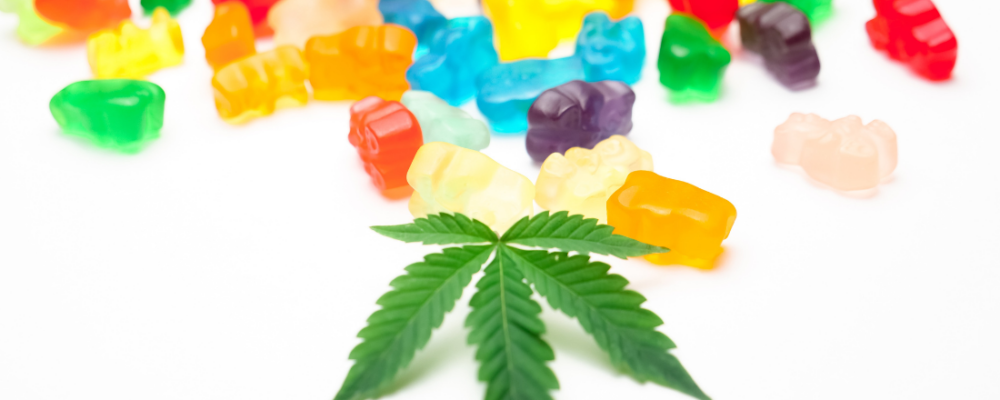
Report and Recommendations of the High Potency Cannabis Think Tank to the State of California
- Lynn Silver, MD, MPH, FAAP
- Jane Appleyard Allen; Neal Benowitz; Ricky Bluthenthal; Beatriz H. Carlini; Ziva Cooper; Timothy Fong; Bonne Halpern-Felsher; Renee M. Johnson; Pamela Ling; Rosalie Liccardo Pacula; Daniele Piomelli; Kelly C. Young-Wolff

Cannabis “potency” is colloquially used to refer to the concentration (%) or dose (mg) of tetrahydrocannabinol (THC)—the primary psychoactive and intoxicating constituent of the cannabis plant—present in cannabis or cannabis products. The potency of legal herbal cannabis currently sold in California is now five to ten-fold the level found nationally in cannabis studied in the 1970s and 80s. A wide range of manufactured solid and liquid chemical extract products of up to 99% THC are now sold as vaping liquids, shatter, waxes, or other concentrates or are used in edibles.
There is a pattern of increasing risk with increases in THC concentration: the higher the levels of THC in cannabis and cannabis products, the higher the risk of experiencing adverse events and cannabis use disorder. Use of high potency cannabis may also be especially harmful for certain populations, including people under the age of 26 whose brains are still maturing, those who are pregnant and their infants, and people with a personal or family history of mental health conditions or substance use disorders.
This report was prepared by a committee of scientists and medical experts who were convened by the California Department of Public Health in response to a Resolution of the Department of Cannabis Control’s Cannabis Advisory Committee and a Governor’s Directive to provide an analysis of the problem of increasing potency of cannabis and cannabis products and formulate recommendations to address it. Dr. Lynn Silver, director of PHI’s Getting it Right from the Start program, served as co-chair of the committee and is an author of the report.
view and download report
Top Ten Recommended Policies by Likely Greatest Impact on Adverse Outcomes, in Order
- Prohibit cannabis product advertising on billboards, or any other general public-facing advertising
- Limit manufacture and sale of high THC products. Specifically a) prohibit the sale of liquid and solid concentrates for inhalation (e.g. dabs, wax, shatter) with THC content above 60% and implement careful oversight of allowable vehicles and diluents to ensure safety; b) Prohibit the sale of cannabis flower with THC content above 25% and prohibit the infusion of additional THC (or other psychoactive cannabinoids) into flower or pre-rolls; and c) Limit edible products to a maximum of one 10 mg THC dose per physical piece or liquid beverage container (excluding tinctures).
- Consider testing, promoting, or facilitating a Quebec-style public monopoly approach to cannabis sales, particularly in jurisdictions that have not yet legalized cannabis sales.
- Restructure state excise taxation on adult-use cannabis to be proportional to the milligrams of THC in the taxed product, applicable to all cannabis products. Ensure that the restructuring maintains or increases cannabis tax revenue in line with the goals established by Assembly Bill 195 (the 2022-2023 legislative commitment to replace revenue lost from the cultivation tax cut by 2026).
- Enforce existing laws and regulations that prohibit products that are attractive to children and restrict flavored additives in inhaled cannabis products.
- Prohibit the use of added flavors (including fruits, mint, menthol, vanilla, chocolate, spices, and other common food flavors) in inhaled products, whether natural or synthetic. Additionally, prohibit language and images that could lead consumers to believe the product has flavors other than those of cannabis.
- Strengthen regulations with clearer, evidence-based criteria for identifying and prohibiting packaging, marketing, and advertising characteristics that appeal to children and youth.
- Fund and implement public education campaigns on the risks of high potency cannabis, including mental health risks. Allocate additional funds from Tier 3 of cannabis tax revenue (without reducing the Elevate Youth program) to the CDPH, totaling $10 million or more per year beyond their current allocation. These funds should be used to enhance high-quality cannabis prevention education campaigns, including those focused on high potency messaging, as well as supportive formative research and testing of messaging. Prioritize campaigns addressing use during pregnancy, drugged driving, and education for youth and seniors.
- Fund and ensure the tracking and regular reporting of negative health outcomes associated with high potency products in California hospitals, emergency rooms, and ambulatory care settings. This should include documenting the type and potency of marketed products. Additionally, incentivize increased screening to more clearly document the product type used in clinical services and poison control cases.
- Require plain packaging for all cannabis products. At a minimum, this should apply to high potency products, including flower with THC content above 20%, inhaled products exceeding 35% THC, and edibles containing more than 10 mg of THC per individual piece or liquid container, if permitted.
“We have passively allowed the shift of our cannabis markets to far more potent products likely to cause significantly greater harm. It is time to change course and acknowledge that not all substances that can be derived from cannabis can be treated as safe consumer products. As a state, we have an interest in building a safer legal cannabis market for the long-term, one in which well-informed consumers can have greater confidence, and which provides legal access to products, packaging, and marketing less likely to induce harmful patterns of use, dependency or other harms.”
– Report and Recommendations of the High Potency Cannabis Think Tank to the State of California
Desired Policy Outcomes
The group identified the following health outcomes as highest priority objectives for policies:
- Reduce the incidence of cannabis use disorder
- Reduce use and frequent use of cannabis by adolescents and youth under age 21
- Reduce cannabis-associated psychosis and psychotic disorders
- Reduce cannabis-associated emergency room visits
- Reduce cannabis use during pregnancy
- Reduce cannabis-impaired driving
Intermediate outcomes prioritized are:
- Increase public awareness of the hazards of high THC potency products and high THC intake
- Reduce sale and consumption of high THC potency products
- Increase availability of lower THC potency products
Recommended Policies to Reduce Adverse Outcomes from High Potency Cannabis
These strategies aim to not only address the potency of the products themselves but also focus on increasing public awareness, promoting safer use, and reducing exposure to the highest-risk groups, such as adolescents and young adults, pregnant individuals, and those at risk of mental health conditions. A comprehensive strategy is essential to mitigate the risks associated with a high potency cannabis market.
These considerations seek to balance the benefits of a legal cannabis marketplace with preventing the harms to population health associated with unrestricted diversification of products driven by competition to sell a legal intoxicant.
Marketing & Advertising:
- Prohibit cannabis and cannabis product advertising on billboards, and any other general public-facing advertising.
- Restrict advertising of cannabis flower with over 20% THC or cannabis products with over 35% THC to simple plain text only.
Product Requirements:
- Limit manufacture and sale of high THC products. Specifically:
- Prohibit the sale of liquid or solid concentrates for inhalation (e.g. dabs, wax, shatter) with THC content above 60% and implement careful oversight of allowable vehicles and diluents to ensure safety;
- Prohibit the sale of cannabis flower with THC content above 25% and prohibit the infusion of additional THC (or other psychoactive cannabinoids) into flower or pre-rolls;
- Limit edible products to a maximum of one 10 mg THC dose per physical piece or liquid beverage container (excluding tinctures).
- Prohibit the use of added flavors (including fruits, mint, menthol, vanilla, chocolate, spices, and other common food flavors) in all inhaled products, whether natural or synthetic. Additionally, prohibit language and images that could lead consumers to believe the product has flavors other than those of cannabis. At a minimum, this should apply to flower or pre-rolls with THC content above 20% and other inhaled products with THC content above 35%.
Retail Environment:
- Require retailers to offer lower dose options for flower (<10% THC) and edibles (5 mg or less), including products which are more suitable for medical use.
- Consider testing, promoting, or facilitating a Quebec-style public monopoly approach to cannabis sales, particularly in jurisdictions that have not yet legalized cannabis sales.
- Require more robust age-gating for websites, online sales, and other online content, including independent third-party verification of identification before entry and sale.
Taxation and Pricing:
- Restructure state excise taxation on adult-use cannabis to be proportional to the milligrams of THC in the taxed product, applicable to all cannabis products.
- Ensure that the restructuring maintains or increases cannabis tax revenue in line with the goals established by Assembly Bill 195 (the 2022-2023 legislative commitment to replace revenue lost from the cultivation tax cut by 2026).
- Prohibit discounting or promotion of flower >20% THC or other inhaled products over>35% THC.
Attractiveness to Children, Packaging, Labeling, and Consumer Information:
- Enforce existing laws and regulations that prohibit products that are attractive to children and restrict flavored additives in inhaled cannabis products.
- Require plain packaging for all cannabis products with flower THC content above 20%, inhaled products exceeding 35% THC, and edibles containing more than 10 mg of THC per individual piece or liquid container, if permitted. Ideally, this should extend to all cannabis products.
- Require clear standard information on the number of standard doses in a package on all cannabis and cannabis product packaging, based on a standard dose of 5 mg THC.
- Strengthen regulations with clearer, evidencebased criteria for identifying and prohibiting products, packaging, marketing, and advertising characteristics that appeal to children and youth.
- Require prominent, rotating, graphic front-ofpackage health warning labels on cannabis products and on advertising, including specific warnings about high potency THC, such as risks of dependency and mental health harms. Health warnings should cover at least one-third of the front-of-package and 15% of any print advertisement surface, with clear contrast between the warnings and the background.
- Adopt this Committee’s recommendations for implementing SB540 requirements
Public Education:
- Fund and implement public education campaigns on the risks of high potency cannabis, including mental health risks. Allocate additional funds from Tier 3 of cannabis tax revenue (without reducing the Elevate Youth program) to the CDPH, totaling $10 million or more per year beyond their current allocation. These funds should be used to enhance high-quality cannabis prevention education campaigns, including those focused on high potency messaging, as well as supportive formative research and testing of messaging. Prioritize campaigns addressing use during pregnancy, drugged driving, and education for youth and seniors.
Compliance Screening, Data Collection, Research, and Evaluation:
- The Department of Cannabis Control and the state budget should allocate funds from the regulatory tier of taxation to establish a pre-market product and packaging review team. This team would screen new products for compliance with these recommendations (if accepted), existing regulations, and attractiveness to children. The team should also review all existing products within two years. Priority should be given to inhaled products with over 50% THC, followed by cannabis flower with over 20% THC, and edibles with more than one dose in a single container or physical piece.
- Fund and ensure the tracking and regular reporting of negative health outcomes associated with high potency products in California hospitals, hospital emergency departments, and ambulatory care settings. Surveillance systems should include the type and potency of marketed products as required data elements. Additionally, incentivize increased screening to more clearly document the product type used in clinical services and poison control cases.
- The Administration and the DCC should support making the current Prop 64 requirement of at least $10 million in annual cannabis tax revenue for research an ongoing budgetary commitment. This funding should maintain a focus on research on health outcomes and policies related to cannabis potency. The requirement, currently set from 2018 to 2028, should be extended beyond 2028 and adjusted for inflation.
- Provide additional funding in the 2024 budget to the University of California Office of the President to support scientific advice and testing related to the implementation of SB540. This funding should include support for developing additional warning messages, such as those regarding high potency, and for creating and evaluating SB540 retailer flyer language. Additionally, allocate funding for similar support every five years for re-evaluating messaging and message design, adjusted for inflation.
Lynn D. Silver, MD, MPH, Senior Advisor at the Public Health Institute, Director of the Prevention Policy Group and of Getting it Right from the Start at PHI, is a co-chair of the independent scientific committee convened by the California Department of Public Health.
Work With Us
You change the world. We do the rest. Explore fiscal sponsorship at PHI.
Support Us
Together, we can accelerate our response to public health’s most critical issues.
Find Employment
Begin your career at the Public Health Institute.


